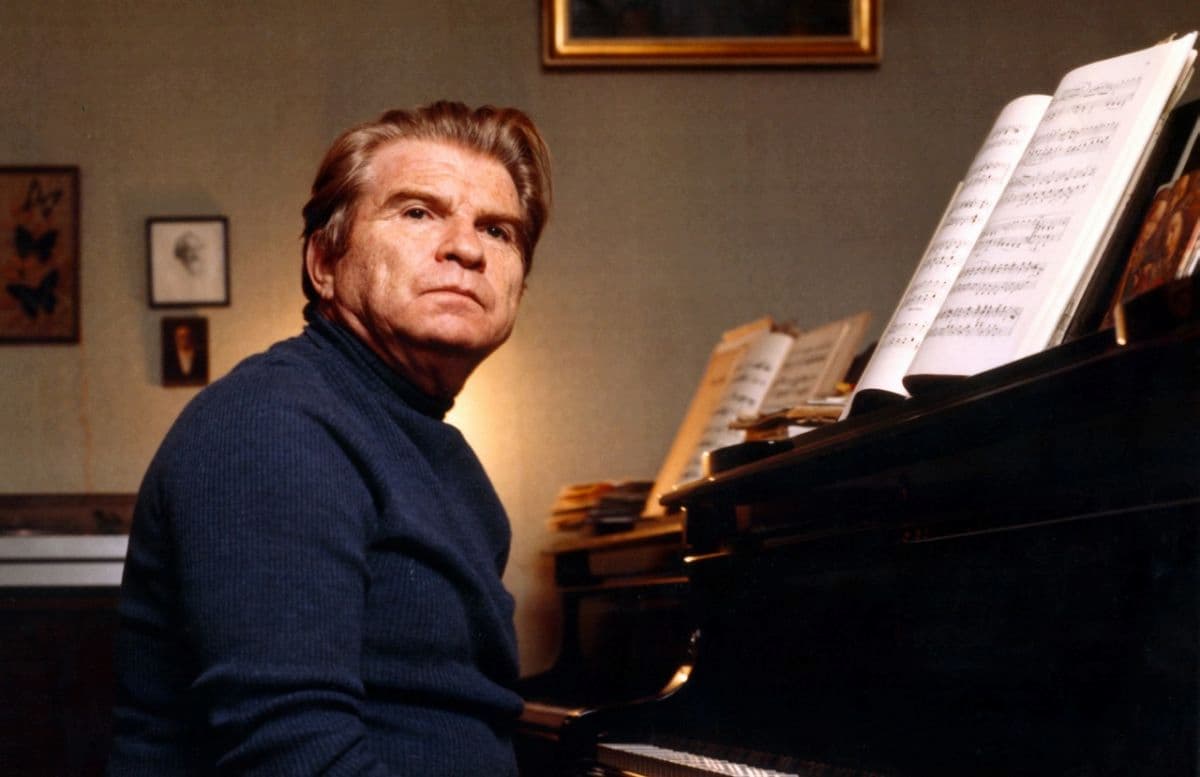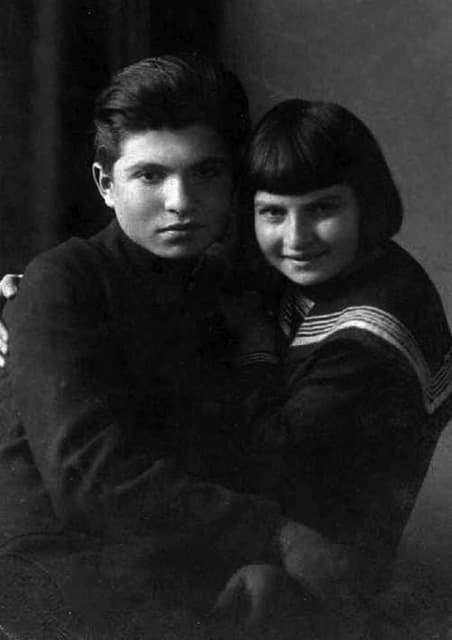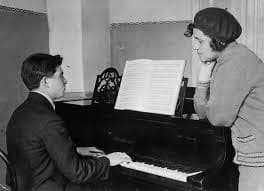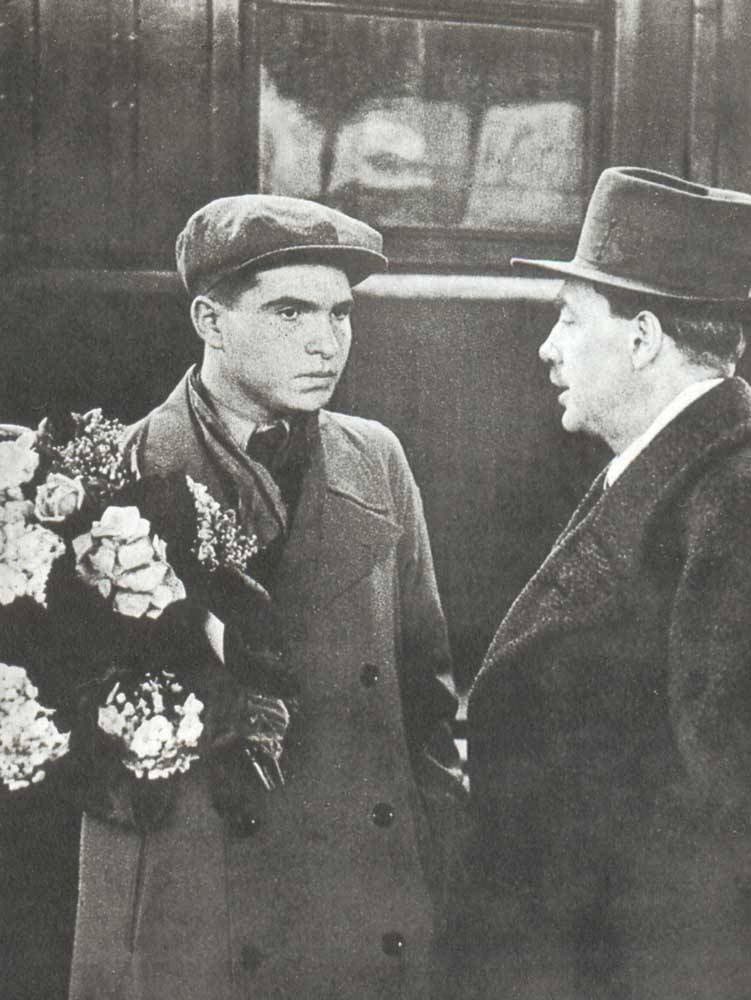Widely regarded as one of the greatest pianists of his time, the stellar career of Emil Gilels was initially smothered during the opening years of World War II. Universally admired for his superb technical control and polished tone, Gilels returned to the international stage in the 1950’s. His recordings detail his development from early impulsiveness and heaven-storming bravura to readings that are imbued with the greatest subtlety, delicacy, and inner concentration.

Emil Gilels
Franz Liszt: Fantasy on two Motives from Mozart’s Marriage of Figaro (Emil Gilels, piano)
The Beginning in Odessa

Emil Gilels and his sister Elizabeth
Gilels was born into a Jewish family in Odessa on 19 October 1916 (new calendar style) to Gesya and Grigory Gilels. Grigory worked as a clerk in a sugar refinery, and music was part of the household as Emil’s older sister Elizabeth took formal piano lessons with Yakov Tkach. Emil remembers that he was a small child, and at night, he liked to imagine that he was conducting. “I could imagine and pretend I was a big-name conductor and wave my arms around. Sometimes I also pretended I was various characters from some of the opera.”
It was clear to everybody that Emil had great musical aptitude and perfect pitch, and he auditioned for Tkach at the age of 4. Tkach considered him too young and told him to come back in a year. Emil returned at the age of 5, and Tkach “turned out to be one of the greatest influences on my career because of the firm foundation he gave me.” Tkach was a highly respected teacher, having studied with the French pianist Alexandre Villoing, who had his early training under a student of John Field.
Johannes Brahms: Piano Concerto No. 2 in B-Flat Major, Op. 83 (Emil Gilels, piano; Cologne Radio Symphony Orchestra; Mario Rossi, cond.)
Studies with Yakov Tkach and First Concert

The young Emil Gilels
Tkach was a strict authoritarian. According to Gilels, “he was very stern with me. I never heard a compliment from him. When I came to him I was quite small, and he kept me that way. He made me feel like a very little pupil who wasn’t preparing his lessons very well. He was also quite dictatorial.” Gilels remembers having to play many scales and forms of scale and countless technical studies. However, Gilels was devoted to the act of practicing, and the foundations of his technique developed rapidly.
Under Tkach’s tutelage, Gilels played his first formal recital in 1929 at Odessa. On the program was Beethoven Pathetique Sonata as well as works by Scarlatti, Liszt, Chopin, and Schumann. For Emil, “it was all very exciting and a highly successful concert, and I remember receiving very favourable reviews.” Odessa was a highly musical city, home to many great artists, and the number of concerts was so “great that many were almost private because the audience was so small.”
Sergei Rachmaninoff: Piano Concerto No. 3 in D minor, Op. 30 (Emil Gilels, piano; Paris Conservatoire Orchestra; André Cluytens, cond.)
Studies with Berta Reingbald and Heinrich Neuhaus

Emil Gilels studying with Berta Reingbald, 1933
When the Gilels family relocated to Moscow, Emil studied with Berta Reingbald, “who was far more open then Tkach, and far more human. She treated me with warmth and kindness, almost like a son.” Reingbald was interested in the arts and in literature, and a completely new vista opened for the young pianist. By 1931 Gilels had won the National all-Russian Competition and one year later played for Artur Rubinstein, who expressed astonishment at his virtuoso prowess.
After Gilels had finished his studies at the conservatory, he became a student with Heinrich Neuhaus between 1935 and 1937. According to Gilels, “all he did was polish my playing a bit, but he was really no great influence on me. He was a good speaker but his playing was spotty. Of course, he was a big authority in music, but in terms of birth, I was born from other professors; I was the musical child of Tkach and Reingbald.”
Edvard Grieg: Lyric Pieces, Book 10, Op. 71 (excerpts) (Emil Gilels, piano)
Gilels had always been nervous before concerts but found that reflection and meditation could help a great deal. Approaches the music in a quasi-fantasy manner, as he explained, “I perform a work differently each time I play it. The ideas are always different. Sometimes I play with greater changes in the dynamics, sometimes with more energy. Also, the projection of tonality is different each time I play, and when I am in top form, the imagination and the spirit come together.
Examining Music From Different Side and Angles

Emil Gilels and Heinrich Neuhaus
Gilels always considered himself an eclectic when it comes to repertoire. “I am not a specialist,” he explained in an interview, “but rather play works of many composers. But I don’t play works that I personally don’t like.” Gilels never liked to repeat performing works too often, as he feared that they might become stale. “I do this because I don’t wish to lose my perspective of any work but concentrate on examining music from many different sides and angles. I always try to find new ideas in a work and fresh ways of projecting old ideas.”
For more of the best in classical music, sign up for our E-Newsletter
